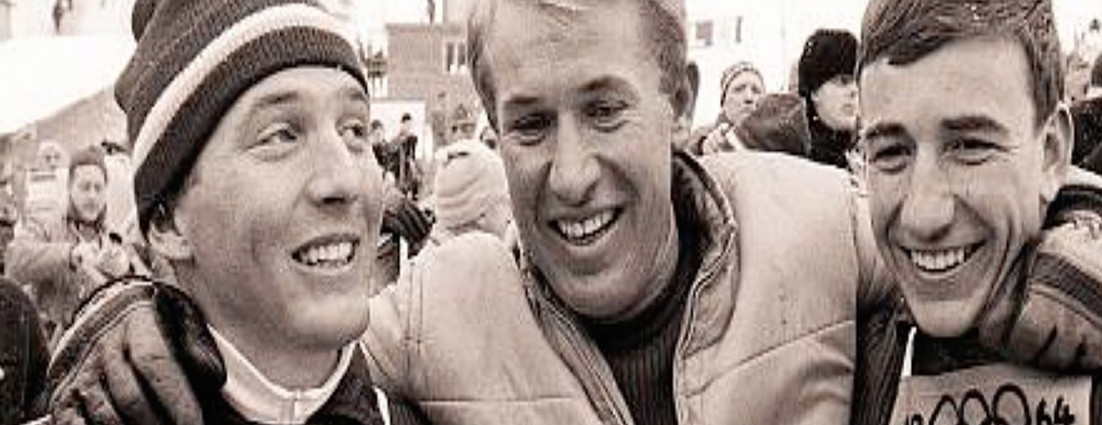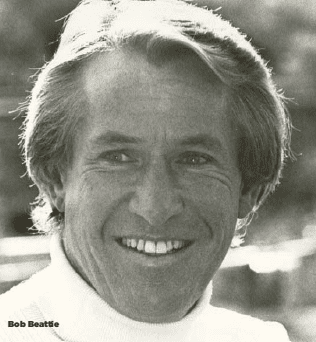Remembering the Architect of Modern US Ski Racing
04.06.2018 | Gabbi Hall

In 2010, Nathaniel Vinton, author of “The Fall Line,” interviewed novelist James Salter about his screenplay for “Downhill Racer,” the 1969 Robert Redford film. Salter said the head coach character, played by Gene Hackman, was based on Bob Beattie, who had helped Salter and Redford travel the alpine World Cup circuit in Europe for their research. One of Hackman’s lines – “Tell him to uncork one” – was a verbatim replay of words he’d overheard Beattie radio up to the start gate at a World Cup.
Bob Beattie’s celebrity in the ski world equals Redford’s in the mainstream media. His impact is unmatched. When he died on April 1, the ski community lost an innovator, icon and coach who dedicated his life to growing the sport and changing the U.S. approach to ski racing.
“Everything that is now considered a matter of fact in ski racing–NASTAR, the World Cup, U.S. Ski Team–it’s because of Bob,” said NBC commentator Steve Porino. “He set the table and we’ve been eating at it for the last 50 years.”
Beattie first found his calling in coaching, starting at Middlebury College and then moving to the University of Colorado. He led the Buffs to back-to-back national championship titles in 1959 and 1960. By age 28, Beattie became the first U.S. national team coach and he exposed them to European racing, including the legendary Hahnenkamm.

“In 1962, I came to Kitzbuehel for the first time with [Billy] Kidd, [Jimmie] Heuga, and Billy Marolt,” Beattie told Ski Racing Media in 2010 . “They were all 18 when we first came to Europe and we had a great time. I’m ten years older then they are, so I’ll always remember their ages. I’ve been here almost every year since then, it’s over 40-years now, almost 50 staying in the same hotel and almost the same hotel room, as a matter of fact. It has become quite a tradition to come here every year.”
In the years that followed, Team USA won its first men’s alpine medals in Olympic Winter Games history with Kidd taking silver in slalom and the late Heuga bronze at the 1964 Games–all under Beattie’s guidance. He changed the approach to ski racing, transitioning the mindset from a hobby to something an athlete had to train for. Beattie’s athletes were going to work for their wins.
“Bob thought the more ski runs you did the better you got,” said Kidd, many years ago during an interview with People Magazine. “His ideas didn’t always coincide with mine.”
In the same interview, Kidd also admitted that Beattie’s toughness provided a key element to the team.
“Bob could really get you charged up,” he said.
In true Beattie style, that was not the only thing he changed in U.S. ski racing. Heading into the Innsbruck Olympics, Beattie rallied support for the ski team at unprecedented levels. He pioneered a new era of promotion and fundraising, and partnered with the American ski industry to raise funds and engaged with corporate world in the European-centric sport.
The fact that ski racing was not the sport-of-choice on his own continent perhaps makes his role in international skiing all the more interesting. In 1966, he partnered with journalist Serge Lang and French coach Honorė Bonnet to found what became the World Cup tour. Just four years later, Beattie pioneered another tour known as World Pro Skiing–featuring the exciting dual format and pro-jumps.
Ultimately, Beattie left the U.S. Ski Team when he felt he could no longer lead it the way he needed to. It was around that time that he got involved in television.
“Bob Beattie single-handedly sold ski racing to Madison Avenue,” said former Beattie PR and marketing guru Jim Lillstrom during a 2012 event. “I watched him prowling the street, selling his new professional sport — all he needed was a tiny sliver of their daily schedule and he could win them over.”
To read the full story, visit www.skiracing.com